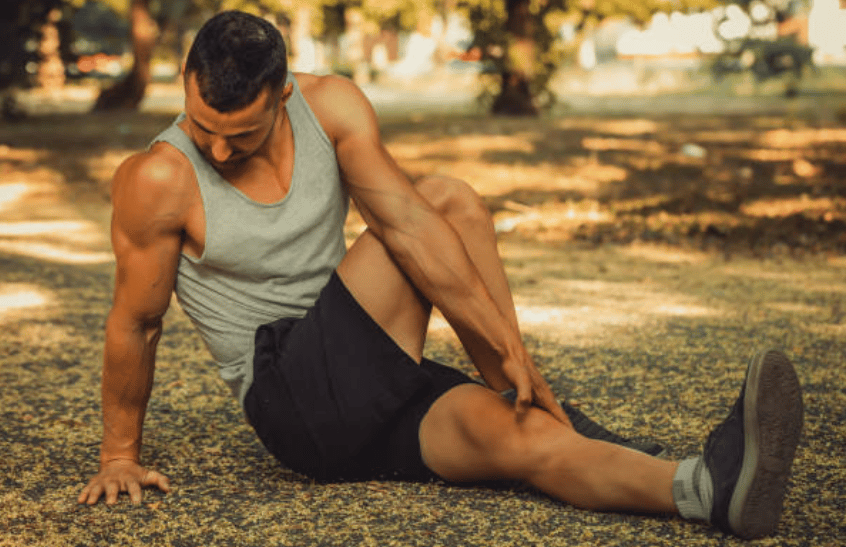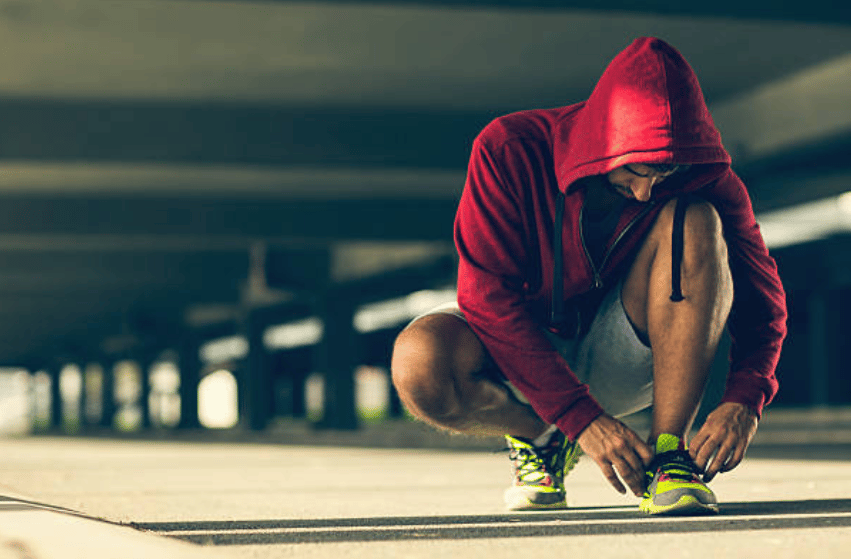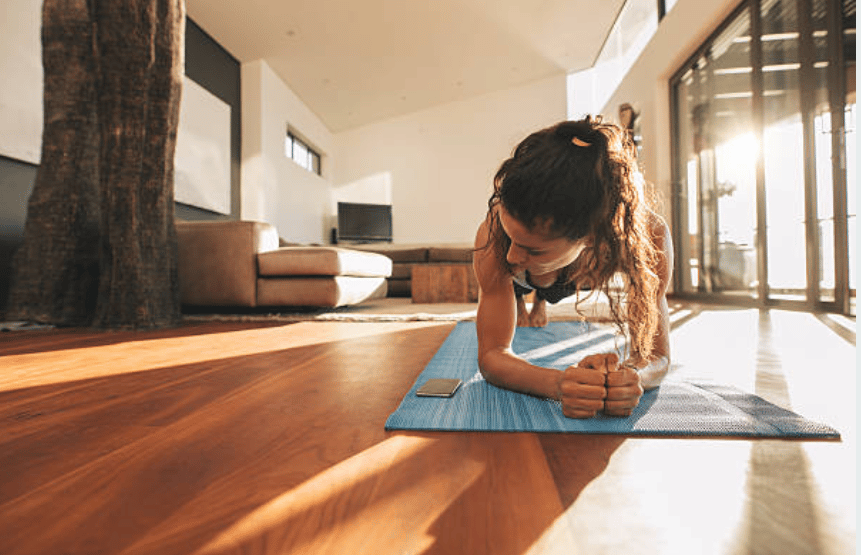Just like warm-ups, stretching is an integral part of sports. This is as true for bodybuilding as for fitness, combat sports, team sports and all other disciplines involving physical effort. Often carried out at the end of training in body-building, the stretching are small exercises supposed to allow the athletes to become more flexible and faster recovery. But this controversial subject divides health and physical activity professionals (physiotherapists, osteopaths, doctors, etc.). So what is it really? Do all muscle stretches offer the same benefits? Should you stretch immediately after a workout?
What is the value of stretching in strength training?
Promote muscle gain
The static stretches are a great way toimprove mobility and increase your range of motion. In the long run, this will allow you to have a better range during your strength training. Exercises such as squats or triceps extensions behind the head can be performed more effectively. As a result, you will achieve a better muscle development.
Each muscle is surrounded by fascia, a connective tissue that wraps around your muscles to stabilize and hold them in place. Sometimes this tissue can be so tight that it limits muscle expansion and prevents growth. To illustrate this concept, imagine wearing a belt that is too tight after a big meal. Stretching regularly will help you expand these connective tissues. This will promote muscle growth.
Recover faster
After a sports session, stretching can have a positive effect on your health. analgesic effect. In other words, they will help you to relax effectively by masking the pains that can appear following a little too intense effort. They also provoke the endorphin release by the body, more commonly known as the happiness hormone. This has a beneficial effect on both the body and the morale of the athlete.
On the other hand, we will see a little later that it is not advisable to stretch right after a workout of bodybuilding.
Avoiding injuries
From numerous injuries are due to a lack of warm-up or rest time after training. Muscles and joints need to be prepared for the tension inherent in weight training. Similarly, they also need to be cooled down gently after your workout or they will not recover well (or at all).
The muscle fibres and the aponeurosis (a fibrous membrane that envelops a muscle) that connect them to the rest of the body can indeed rupture if they have not been warmed up beforehand.
In addition, you should never stretch after an injury, as this can make it worse. You risk damaging the already weakened muscle fibres.
What are the different stretching methods?
It is possible to distinguish three main types of stretching:
- static stretching,
- ballistic stretching,
- stretching in PNF.
Static stretches can be divided into two categories: the active and passive stretching. The first method, also known as stretchingThe aim of the exercise is to put the muscles under tension. While stretching the limb to be stretched, it is advisable to apply a light contraction to the muscle in question, release, then repeat the operation. These movements should always be done without forcing, listening to your body. At the slightest pain, it is essential to stop the exercise immediately.
In the passive method, the idea is to use the weight of the body to release all tensions and to soften the joints. This type of activity is perfect for relaxing and unwinding several hours after a workout or on rest days. However, it is advisable to avoid static stretching before your physical exercise session. You risk reducing your muscular capacities in a significant way.
The ballistic exercises are a dynamic way to prepare the body for the effort or to relax it. The heel and buttocks are undoubtedly the best known ballistic movements. They aim to revitalize the blood circulation and bring vigor to your body.
Finally, the PNF method (or FNP in French for Proprioceptive Neuromuscular Facilitation) is a stretching technique that combines the different methods already mentioned. It aims to take advantage of the complementarities between the exercises favouring tension and those favouring relaxation.
When is the best time to stretch?
These different stretching methods can be applied before, during or after your weight training. They can also be done on your days off. On the other hand, the benefits obtained will be different depending on when you stretch. Even worse, some stretches should not be done during certain phases of your weight training program.
Before the workout
Static stretching should be avoided before training. Indeed, the fact of stretching in a static manner before an effort will generate a deficit in blood circulation and oxygenation. You will therefore be less explosive during your workout.
This advice is therefore valid for all sports requiring strong muscle contraction. Static stretching can be useful if you practice dance or certain gymnastic disciplines.
If your sport includes sprints, jumps or explosive efforts, many studies now show that static stretching before training will decrease your performance. In some cases, it can even lead to injuries such as tendonitis.
But then how stretch before a sports session ? Focus on dynamic and ballistic stretches (jumping jacks, knee raises, heel-and-toe, etc.) to increase body temperature and prepare your body for exercise. It also improves blood circulation, unlike static exercises. At the very least, it is important to engage the muscle groups that will be worked during the session. If your workout targets the upper body, your stretching routine should therefore focus on the pectoral muscles, back, biceps and triceps.
These dynamic stretches are to be integrated into your pre-musculation warm-upThis phase is essential for optimal muscle mass gain.
Looking for good workouts to follow?
During the workout
During your workout, you can enjoy your rest period between sets to stretch out muscles that are not flexible enough. However, avoid stretching the muscle groups you are working.
For example, if your calves are often stiff and tense and your exercises involve your arms, you can stretch your legs for 5 to 10 seconds. In the same way, you can perform back relaxations and spine between sets of squats or thigh presses. All you have to do is hang from a pull-up bar for a few seconds.
After weight training
Stretching just after weight training is strongly discouraged. Indeed, static movements performed just after the effort would reduce blood flow and venous return. If it can bring a temporary relief, the stretching after training risk of aggravating the microtrauma suffered by the muscle fibres, preventing their healing (muscle catabolism) and therefore increasing the recovery time.
While there are many contradictions on the subject of stretching after weight trainingIt is better to choose a moderate cardio activity at the end of the training. This helps to improve blood flow and eliminate waste products in the body.
But should you stretch after a leg or upper body workout? Yes, it is possible to benefit from it if stretching is done two hours after the session, after the shower for example.
Outside of weight training
Practiced regularly outside of your sports sessions, stretching can help you to become more flexible and range of motion. For example, it may be a good idea to set up a morning routine (but be sure to wait a few hours after getting up) to focus on the stiffest muscles.
Examples of exercises to include in your stretching program
First and foremost, note that it is best to always stretch a warm muscle, and to do so gradually. In the case of a sudden stretch, your muscle will naturally protect itself and offer resistance.
Your stretches should last between 10 and 15 seconds to avoid muscle hypoxia (insufficient oxygen supply to your muscles). This would lead to a decrease in flexibility, in other words the exact opposite of the desired effect.
Also make sure to breathe easy during your stretching. Focus on breathing in and out so you don't hyperventilate.
The back stretches are probably the most important. It is therefore essential to warm up the back before a workout and then stretch it a few hours later to avoid pain or a hip lock.
For a post workout back stretch, you can get a roller and apply pressure to the entire body. dorsal muscle chain (back and lumbar).
This should precede your stretching session. During this session, you will be able to perform quadriceps stretchingand hamstrings (hind limbs).
It is also possible to practice yoga movements such as the pincer posture. This consists of stretching your back while sitting with your legs stretched and closed. The goal is to grab your toes. Doing this movement will relieve all your muscle tension almost immediately. You can also reproduce this stretch while standing, legs stretched and glued together, while going down slowly to touch the ground. Logically, your calves and thighs should pull as much as your back when you do this exercise.
To stretch the upper body, various exercises can be performed.
The deltoids can be relaxed if you extend your right arm, place it across your body against the opposite shoulder and then gently pull the arm with your left hand pressed against the elbow. Then repeat the stretch with the left arm.
For the biceps, the ideal is to bring your left hand to your lower back and then try to catch it with your right hand over your right shoulder. Repeat the exercise for the other arm.
Finally, the triceps stretch is a fairly simple movement. Lean your hand against a wall with your arm extended in front of you. Rotate your shoulder and try to bring your arm up.
All of the exercises listed are only examples of stretching. It is up to you to find or adapt your own post workout stretching program. This will help you build muscle more easily, gain more muscle mass and recover even better.
Theragun, a credible alternative to stretching?
The Theragun is an accessory that replaces stretching and promotes muscle recovery in just 15 minutes thanks to its tennis ball design. It targets sore muscles, prevents injuries and relieves muscle spasms.
However, the price is relatively high. If you don't practice weight training on a regular basis, it will be preferable to opt for static, ballistic and PNF stretching.
Additional articles to read:
What is the importance of warming up in bodybuilding?










One Comment
excellent article
could you do an article or even a video on the theragun?
I really feel like it's too intense for the muscle
What is your opinion on this issue?